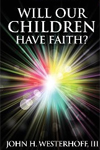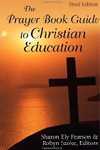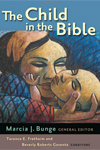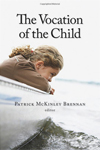Compact Unit

CHILDREN’S DAY (BIRTH–AGE 12)
(FOCUS ON LITERACY)
Sunday, March 17, 2013
Writers for This Unit: Stacey M. Floyd-Thomas, African American Lectionary Team member, and Guest Writer Michael R. Fisher, Jr., graduate student in the Graduate Department of Religion at Vanderbilt University and an associate minister at Covenant Baptist United Church of Christ in Washington, DC.
The unit you are viewing, Children’s Day (with a focus on literacy), is a compact unit. This means that it does not have a supporting cultural resource unit and worship unit. Instead, to enliven the imagination of preachers and teachers, we have provided scriptural text(s) that we suggest for this moment on the calendar along with a sermonic outline, suggested links, books, articles, songs, and videos. For additional information, see Children’s Day in the archives of the Lectionary from 2008–2011. In 2011, the African American Lectionary began posting compact units for moments on its liturgical calendar.
I. Description of the Liturgical Moment
Zebra S. Jefferson wrote in the 2012 African American Lectionary compact unit for Children’s Day:
Jefferson rightly suggests that we should celebrate God’s greatest gifts through the sacred stewardship of our children. Proverbs 6:22 admonishes us to “train children in the right way, and when old, they will not stray” (NRSV). One of the most important methods by which we train our children up in the way that is right is by teaching them to be literate. Literacy equips our children with the tools they will need to navigate the exciting journeys of life, and is necessary for providing instruction in the ways of truth and righteousness.
II. Children’s Day (Focus on Literacy): Sermonic Outline
A. Sermonic Focus Text(s): 2 Timothy 3:15-17 (New Revised Standard Version)
(v. 15) and how from childhood you have known the sacred writings that are able to instruct you for salvation through faith in Christ Jesus. (v. 16) All scripture is inspired by God and is useful for teaching, for reproof, for correction, and for training in righteousness, (v. 17) so that everyone who belongs to God may be proficient, equipped for every good work.
B. Possible Titles
i. Train Up a Child
ii. Nurturing Our Children for God’s Work
iii. Righteousness and the Literate Child
C. Point of Exegetical Inquiry
In any text there can be several words or phrases that require significant exegetical inquiry. One exegetical inquiry raised by this text asks the question, “What does it mean for a scriptural text to be inspired by God?” Exploration of this query may result in the unearthing of important religious concepts that further highlight the importance of early childhood literacy and theological development. One may also want to explore the concept of righteousness: What is the biblical conception of “righteousness” and how does literacy best prepare children to strive for such a concept? Finally, proficiency is a theme that is also highlighted by today’s text. What does it mean to be proficient in the word of God and how does literacy lend toward this aim?
III. Introduction
Have you ever wondered how your life would be different if you were never taught the skills of reading, writing, listening, speaking, and critical thinking when you were a child? How would the trajectory of your life be altered if no one highlighted the importance of learning the skills of literacy in your childhood? Literacy is instrumental to child development and is absolutely necessary to acquire knowledge and wisdom. As parents and guardians, it is our responsibility to ensure that God’s greatest gifts to us are provided with the tools that they need to live meaningful and fulfilling lives.
Moreover, as members of the Christian community, we know we have a particular responsibility to raise our children up in the Godly way, to train them to decipher the word of God and learn what God requires of God’s righteous people, and to prepare them to do the good work of Christ that honors God, self, and neighbor. We set children on this worthy path by teaching them the skills of literacy.
IV. Moves/Points
Move/Point One – There is no better place for children to receive instruction in God-inspired Scripture and to learn the truths of the gospel than at home from people they love.
a. The gospel was the most valuable thing Timothy inherited from his family as a child.
b. Children learn better in nurturing and affirming environments.
c. Children can develop value for literacy the more they are exposed to its importance.
Move/Point Two – Literacy is the key to righteousness.
a. Literacy provides the tools for children to comprehend the concept of righteousness.
b. Literacy enhances a child’s training in righteousness.
c. Literate children can articulate righteous behavior to their peers.
Move/Point Three – A child who is proficient in understanding Scripture is equipped for doing the work of God.
a. Literacy is the main tool for acquiring knowledge, which makes one proficient.
b. Without literacy, proficiency is impossible.
c. Proficient children become proficient adults who are prepared to do God’s good work.
V. Celebration
When children are taught to think critically, they are better prepared to excel in school and in life. By teaching our children the importance of reading, writing, speaking, listening, and analyzing, we provide them with the tools necessary to effect meaningful, positive change in society. Literacy becomes the launch pad whereby children can take off into the vastness of the unknown to discover the wonder that lies not only in the world that surrounds them, but also within themselves.
The fourth chapter of Proverbs admonishes children to listen to their parents’ instruction, to seek after insight because it will exalt and honor them. As adults, we have the blessed responsibility to ensure that we provide the instruction necessary that teaches our children to value literacy, which leads to knowledge and wisdom that can be found in God-inspired Scripture. By doing so we prepare our children for a lifetime of service to God and neighbor as they seek to live lives worthy of the God that calls them to exemplify the love of Jesus Christ.
VI. Illustration
The Child Who Finishes Strong
It doesn’t matter how you start, it only matters how you finished. Is there anybody here that knows because Jesus finished strong we can finish strong?
| —Eugene Gibson, Memphis, Tennessee |
This illustration is taken from the Sermon Illustrations section of The African American Lectionary. See the Sermon Illustrations section of The African American Lectionary for additional illustrations that you may wish to use in presenting a sermon for this moment on the liturgical calendar.
VII. Sounds, Sights, and Colors in This Passage
| Sounds: | Children laughing; children turning the pages of books; children reciting Bible passages; |
| Sights: | Children in a classroom; parents with their children; children reading the Bible; Jesus sitting with children; Jesus holding a child; children receiving graded A+ papers from teachers; and |
| Colors: | Red, orange, green, black, brown, blue, purple, yellow, and violet. |
VIII. Songs to Accompany This Sermon
A. Well-known Song(s)
- Greatest Love of All. By Linda Creed and Michael Masser
- Tomorrow (A Better You, Better Me). By Siedah Garrett and George Johnson
- Child of the King. By Cindy Walker
B. Traditional and Modern Song(s)
- Jesus Loves Me. Traditional
- Jesus Loves the Little Children. Traditional
- I Love You Lord. By Anthony McEastland
C. Spiritual(s)
- Blessings in the Love. By Charlene Moore Cooper
- Lord, Listen to Your Children Praying. By Ken Medema
- Wash, O God, Our Sons and Daughters. By Ruth Duck. Harm. by Ronald A. Nelson
- Living in the Imagination of God. By Cecilia Olusola Tribble
D. Liturgical Dance Music
- Where Would I Be. By Alphaeus Anderson
- Bow Down My Child. By Lauren Denise Carpenter, Robin Dalton, Bryant Scott, and Sidney Scott
E. Song(s) for the Period of Prayer
- God’s by Design. By Jeff Hardy
- Jesus Is Right Here. By Anne Weister Anderson
F. Sermonic Selection(s)
- Father Abraham. Traditional
- God Made Me. Traditional
G. Benediction Song(s)
- The Blessing of Abraham. By Donald Lawrence
- Show Up and Show Out. By Dottie Peoples
IX. Videos, Audio, and/or Interactive Media
- “On the Shelf: Episode One—Early Childhood Literacy.” Online location:
http://www.youtube.com/watch?v=8dZOYq3Zjg0 accessed 29 November 2012.
- “Building Literacy Competencies in Early Childhood (Davidson Films).” Online
location: http://www.youtube.com/watch?v=heYjxIS9vYw accessed 29 November 2012.
- “The Importance of Early Literacy.” Online location:
http://www.youtube.com/watch?v=hEtNuBstr0I accessed 29 November 2012.
X. Books to Assist in Preparing Sermons, Bible Studies, and/or Worship Services Related to Children’s Day (Birth–Age 12) (Focus on Literacy)
 |
Westerhoff III, John H. Will Our Children Have Faith? (3rd Ed.). New York, NY: Morehouse Publishing Co., 2012. |
 |
Szoke, Robin and Sharon Ely Pearson. The Prayer Book Guide to Children Education (3rd Ed.). New York, NY: Morehouse Publishing Co., 2009. |
 |
Bunge, Maria, Terrence Friethem, and Beverly Gaventa. The Child in the Bible. Grand Rapids, MI: Wm. B. Eerdmans Publishing Co., 2008. |
 |
Brennan, Patrick. The Vocation of the Child. Grand Rapids, MI: Wm. B. Eerdmans Publishing Co., 2008. |
- “National Children’s Day: Second Sunday in June” Online location: http://www.nationalchildrensday.us/index.php accessed 29 November 2012.
- “The Church and Children.” Online location:
http://www.ncccusa.org/pdfs/churchandchildren.pdf accessed 29 November 2012.
- African American World for Kids. Online location: http://pbskids.org/aaworld/ accessed 29 November 2012.
XII. Notes for Select Songs
A. Well-known Song(s)
- Greatest Love of All. By Linda Creed and Michael Masser
Location:
Houston, Whitney. Whitney Houston. New York, NY: Sony, 1985.
- Tomorrow (A Better You, Better Me). By Siedah Garrett and George Johnson
Location:
Jones, Quincy. Back on the Block. New York, NY: Universal, 1989.
- Child of the King. By Cindy Walker
Location:
Cleveland, James. Crown Price of Gospel. Detroit, MI: Hob Records, 1993.
B. Traditional and Modern Song(s)
- Jesus Loves Me. Traditional
Location:
Flying Colors. Jesus Loves Me. St. Rose, LA: Gabbro Records, 2007.
- Jesus Loves the Little Children. Traditional
Location:
VeggieTales. 150 All-Time Favorite Songs! Winona, MN: Big Idea Records, 2012.
- I Love You Lord. By Anthony McEastland
Location:
Joshua’s Troop. JT3: Joshua’s Troop. Nashville, TN: New Haven Records, 2007.
C. Spiritual(s)
- Blessings in the Love. By Charlene Moore Cooper
Location:
African American Heritage Hymnal. Chicago, IL: GIA Publications, 2001. #620
- Lord, Listen to Your Children Praying. By Ken Medema
Location:
Zion Still Sings for Every Generation. Nashville, TN: Abingdon Press, 2007. #156
- Wash, O God, Our Sons and Daughters. By Ruth Duck. Harm. by Ronald A. Nelson
Location:
African American Heritage Hymnal. #674
- Living in the Imagination of God. By Cecilia Olusola Tribble
Location:
Zion Still Sings. #151
D. Liturgical Dance Music
- Where Would I Be. By Alphaeus Anderson
Location:
Teen Pure-N-Heart. Teen Pure-N-Heart: Live. Easley, SC: Music2ChangeU, 2011.
- Bow Down My Child. By Lauren Denise Carpenter, Robin Dalton, Bryant Scott, and Sidney Scott
Location:
Jesus Gang. Live My Life for You. Indianapolis, IN: Tyscot, 1996.
E. Song(s) for the Period of Prayer
- God’s by Design. By Jeff Hardy
Location:
Boys & Girls Choir of Harlem. God’s by Design. Taunton, MA: Comin Atcha Music, Inc., 2005.
- Jesus Is Right Here. By Anne Weister Anderson
Location:
Whitman, Walt & The Soul Children of Chicago. My Time My Favor. Los Angeles, CA: M Paact, 2010.
F. Sermonic Selection(s)
- Father Abraham. Traditional
Location:
The Heaven’s Sake Kids. Bible Songs. Pamplin, VA: Pamplin Music, 1998.
- God Made Me. Traditional
Location:
The Mississippi Children’s Choir. Children of the King. Jackson, MS: Malaco, 1992.
G. Benediction Song(s)
- The Blessing of Abraham. By Donald Lawrence
Location:
Lawrence, Donald & The Tri-City Singers. Finale Act II. Brentwood, TN: EMI, 2006.
- Show Up and Show Out. By Dottie Peoples
Location:
Peoples, Dottie. Show Up & Show Out. Atlanta, GA: Atlanta International, 2000.



